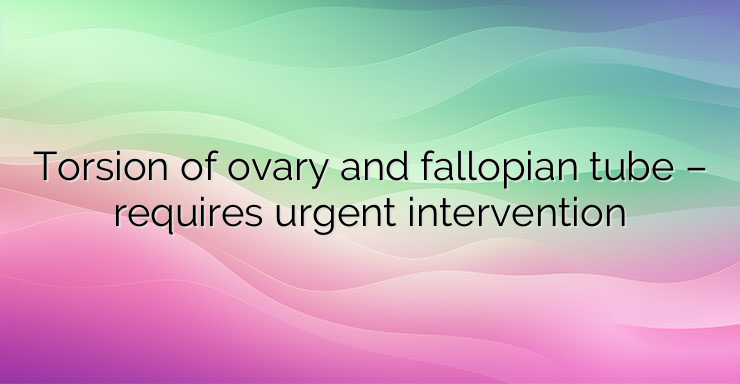Adnexal torsion is a twisting of the ovary and sometimes the fallopian tube that interrupts the arterial blood supply and causes ischemia. Adnexal torsion is uncommon and most commonly affects women of reproductive age. It usually indicates an ovarian abnormality. Risk factors for adnexal torsion include pregnancy, ovulation induction, ovarian enlargement to more than 4 cm (especially with benign tumors). Benign, compared to malignant, cause torsion more often. Torsion of normal adnexa, which is rare, is more common in children than in adults. Usually one ovary is affected, but sometimes the fallopian tube is also involved. Twisting of the adnexa can lead to the development of peritonitis. Thirty percent of all cases of torsion occur in women under the age of 20. Approximately 5 in 100,000 women aged 1 to 20 years are affected, and girls over 10 years of age are at increased risk due to hormonal influences and growth of the gonads, which lead to an increased frequency of physiological and pathological formations. The most common ovarian pathologies found in adolescents with adnexal torsion are benign functional ovarian cysts and benign teratomas. Torsion of malignant ovarian masses in this population is rare. More than half of torsion cases involve the right ovary. The lower incidence of torsion of the left ovary is due to the protective nature of the descending colon. Congenitally long ovarian ligaments, excessive laxity of the pelvic ligaments, or a relatively small uterus that allows more room for torsion of the adnexa on its axis may be predisposing factors for the condition. Cases of isolated tubal torsion and bilateral torsion of the adnexa in children are very rare and are almost always associated with tubal pathology such as hydrosalpingus or paratubal cyst. If ovarian torsion is suspected, timely intervention with diagnostic laparoscopy is indicated to preserve ovarian function and future fertility. Torsion of the adnexa causes sudden, severe pain in the pelvis, in some cases accompanied by nausea and vomiting. For days or sometimes weeks before the sudden pain, women may have intermittent colicky pain, possibly as a result of intermittent torsion, which resolves spontaneously. Cervical motion tenderness, unilateral painful appendages, and peritoneal signs are usually present. Patients with clinically suspected adnexal torsion should undergo urgent diagnostic laparoscopy. The differential diagnosis of an adolescent with abdominal pain is broad, and the presentation of adnexal torsion is nonspecific. Although ovarian viability declines as time progresses from the onset of pain to surgical detorsion,the dual blood supply of the ovary renders it resistant to vascular injury, and the exact duration of vascular disruption required to irreversibly damage the ovary is unknown. Some studies show that a sharp decline in ovarian function occurs 72 hours after the onset of symptoms. References: Adnexal Torsion in Adolescents | ACOG


Leave a Reply